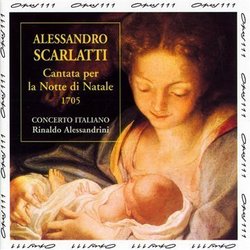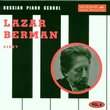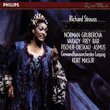| All Artists: Furio Zanasi, Arcangelo Corelli, Alessandro Scarlatti, Rinaldo Alessandrini, Concerto Italiano, Rossana Bertini, Elisa Franzetti, Elena Cecchi Fedi, Gianluca Ferrarini, Sandro Naglia Title: A. Scarlatti: Cantata per la Notte di Natale Members Wishing: 2 Total Copies: 0 Label: Opus 111 Release Date: 12/17/1996 Genres: Special Interest, Classical Styles: Holiday & Wedding, Opera & Classical Vocal, Forms & Genres, Concertos, Historical Periods, Baroque (c.1600-1750) Number of Discs: 1 SwapaCD Credits: 1 UPC: 709861301560 |
Search - Furio Zanasi, Arcangelo Corelli, Alessandro Scarlatti :: A. Scarlatti: Cantata per la Notte di Natale
 | Furio Zanasi, Arcangelo Corelli, Alessandro Scarlatti A. Scarlatti: Cantata per la Notte di Natale Genres: Special Interest, Classical |
Larger Image |
CD DetailsSimilar CDs
|
CD ReviewsChristmas in Arcadia Giordano Bruno | Wherever I am, I am. | 12/01/2008 (5 out of 5 stars) "Alessandro Scarlatti (1660-1725) was not unresponsive to the flow of patronage. In the first decade of the 18th C, in Rome, the spigots of patronage all gushed from the pools of the Arcadian Academy, a loose association of cardinals and other potentates of the catholic hierarchy, plus their aristocratic kin and the clientage of poets, scholars, composers, and musicians who lived among them and often with them. One Arcadian was Silvio Stampiglia, the author of the libretto for this cantata, heard first in 1705 in the most auspicious venue in Rome, the Apostolic Palace of the vatican on Christmas Eve. There has been a aura of homoerotic decadence around the Arcadians all along, but recent scholarship focused on the Roman cantatas of GF Handel has revived the sense of coded messages and disguised desires in the pastoral poetry and music of the era. No such patina has formed on the works of Alessandro Scarlatti, as far as I know. He was, to his son Domenico's discomfort, a domineering Papa at heart.
The Arcadian influence, however, reached well beyond any "da Vinci Code" flirtatiousness. Both in poetry and in music, the Arcadians aimed at a radical simplification and rationalization -- an Apollonian ideal of impersonality in reaction to the flamboyant Dionysian emotionalism of the previous generation. In Handel's cantatas, that influence was revealed in the rapid shift from arias sung in the persona of a distraught woman to arias sung in a genderless or masculine persona (although also in treble voices, by castrati) of notable dispassion. Likewise the forms of aria drifted from irregular and semi-recitative to the highly regular da capo arias that ruled music all through the next 100 years. Scarlatti also caught the wave; his music from this decade is noticeably less polyphonic, less harmonically adventuresome, more melodic, more innocent. The Cantata per Natale "Abramo, il tuo sembiante" evinces Scarlatti's gentle mood of simplification. It's as sweet as a Victorian Christmas carol sung around a candle-lit creche. It's also thoroughly Arcadian in its scenario, not the usual shepherds and angels but rather the voices of five Old Testament Prophets waiting in Limbo for the End of Times. The five 'men' are Daniel, Ezechial, Isaiah, Jeremiah, and Abraham, all of whom testify to the wonder of the Incarnation/Birth of Jesus. Only Jeremiah offers a few notes of moody foreboding at the knowledge he has of the later crucifixion-fate of the Holy Baby. Musically, the cantata is a pleasant stream of recitativos, arias, and duet arias, all sung magnificently by the voices of Concerto Italiano: sopranos Rosanna Bertini and Elena Cecchi Fedi, male alto Claudio Cavina (now director of La Vexeniana), tenor Sandro Naglia, and basso Sergio Foresti, with Rinaldo Alessandrini at the harpsichord and conducting. The continuo includes theorbo lute, contrabass viol, and a splendidly-artful bassoon, which also performs in tandem with an oboe in obbligato accompaniments. Concerto Italiano is the height of refinement always, the leading edge of historically informed performance." |



